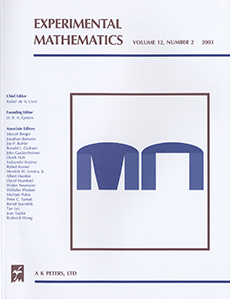Abstract
We present new computations of approximately lengthminimizing polygons with fixed thickness. These curves model the centerlines of “tight” knotted tubes with minimal length and fixed circular cross-section. Our curves approximately minimize the ropelength (or quotient of length and thickness) for polygons in their knot types. While previous authors have minimized ropelength for polygons using simulated annealing, the new idea in our code is to minimize length over the set of polygons of thickness at least one using a version of constrained gradient descent.
We rewrite the problem in terms of minimizing the length of the polygon subject to an infinite family of differentiable constraint functions. We prove that the set of variations of a polygon of thickness one that does not decrease thickness to first order is a finitely generated polyhedral cone, and give an explicit set of generators. Using this cone, we give a first-order minimization procedure and a Karush–Kuhn–Tucker criterion for polygonalropelength criticality.
Our main numerical contribution is a set of 379 almost-critical knots and links, including all prime knots with ten and fewer crossings and all prime links with nine and fewer crossings. For links, these are the first published ropelength figures, and for knots they improve on existing figures. We give new maps of the self-contacts of these knots and links, and discover some highly symmetric tight knots with particularly simple-looking self-contact maps.
Citation
Ted Ashton. Jason Cantarella. Michael Piatek. Eric J. Rawdon. "Knot Tightening by Constrained Gradient Descent." Experiment. Math. 20 (1) 57 - 90, 2011.
Information




